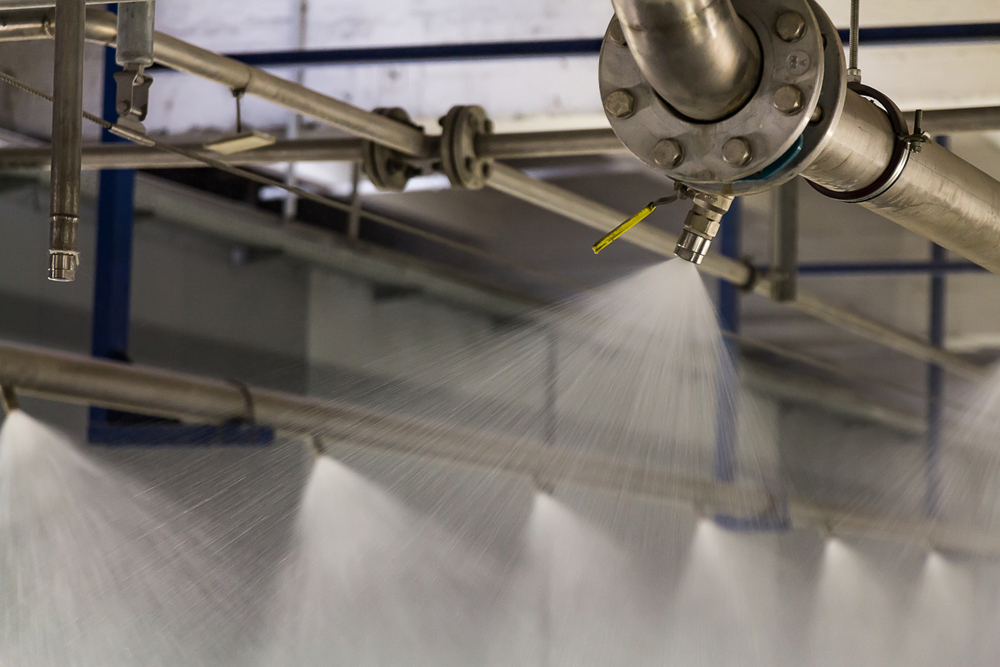Common Spray Nozzle Problems & Solutions

Spray nozzles’ performance can be impacted by a range of internal and external factors based on the application and industry. From improper assembly to corrosion due to the application, these issues can enhance wear and tear on components or make the nozzles fail prematurely. Understanding the common spray nozzle problems & solutions can help you develop the proper maintenance program to prevent or minimize many of these issues.
Erosion/Wear
Internal erosion may be caused by the liquid pressure or by the constant use of the nozzles in the application. While it is difficult to spot the erosion or wear at the source, you may notice a distortion in the spray pattern where the liquid no longer reaches certain areas. You may also see an increased flow rate or droplet sizes that increases water usage, or a decrease in pressure where the nozzle spray is not as effective. Knowing the efficiency of the spray nozzles at the time of installation, and taking note of abnormalities during the use of the nozzles, can help you predict when erosion or wear has occurred.
Corrosion
Corrosion can wear down the metal of the spray nozzles, causing it to become pitted and flake into the application. This corrosion may come from chemicals in the liquid that are negatively interacting with the metals of the nozzle, or from the environment. This corrosion may impact droplet sizes, flow rates, and pressure. Selecting nozzle materials that handle the type of corrosion found in the application or eliminating unnecessary chemicals that cause corrosion, can prolong the life of the nozzles.
High Temperatures
Nozzles that are not designed to handle higher temperatures may experience heat damage. This heat damage may cause the nozzle to crack or speed up erosion or wear of the components. Understanding the application and the possible high temperatures experienced from either the liquid, application, or environment can prevent this common issue.
Caking/Bearding
Liquids may carry abrasives, limescale, or other materials during the application process. When the liquid evaporates along the outside of the nozzle, these materials become deposited on the metal. In time, the buildup of material can impact the interior and exterior orifice to obstruct the liquid's flow. Clearing out unnecessary materials from the liquid and cleaning the buildup of caked materials can improve nozzle performance.
Accidental Damage
Accidental damage can happen during spray nozzle installation, using improper cleaning tools, or from running applications. Visually inspecting the nozzles for damage and performing the appropriate repairs/replacement immediately can prevent unnecessary downtimes.
Clogging
Spray nozzles may become clogged which can impact the liquid's flow rate, impair the performance of the nozzle, or alter the spray pattern. Clogs may come from solid materials in the liquid or erosion as metal flakes from pipes gets trapped in the nozzle's orifice. Performing regular cleanings can remove many clogs.
Improper Assembly
Improper assembly of the nozzle can cause nozzle damage, liquid leaks, poor spray performance, or excessive wearing of components. Ensure that the assembly of the nozzle is done correctly by inspecting it after installation and performing a test run to spot potential issues.
Tips for Preventative Maintenance
Preventative maintenance improves both the performance and longevity of the spray nozzle. Develop a maintenance program that is specific to the spray nozzle type, the application, the duration of the spray nozzle's use, the liquid type, the surrounding environment, and other factors such as flow rate and pressure. Then you can create a cleaning and repair schedule that can address common spray nozzle problems while providing timely solutions.
Here at Lechler, we offer spray nozzles for a variety of applications and industries. Learn more about our products and how to maintain them by contacting us today.